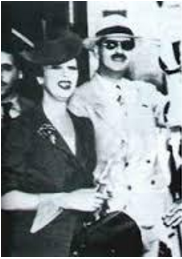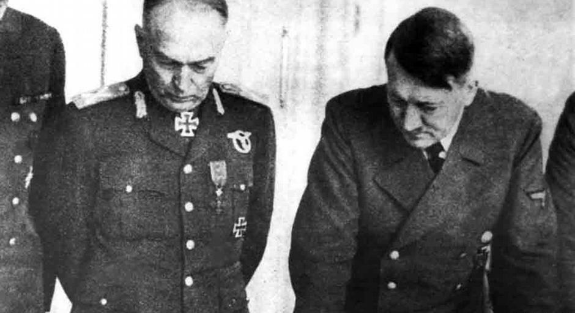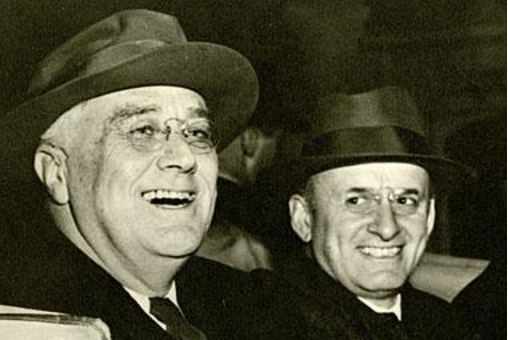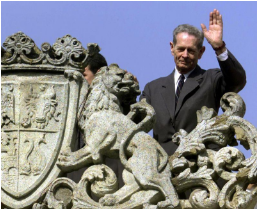Gustav Mahler–Symphony No. 5 in C# Minor–1. Trauermarsch
On November 11, 2004, the final report from the International Commission on the Holocaust in Romania, chaired by Nobel Peace Prize laureate, Elie Wiesel, with members from the Romanian government, Jewish organizations and Holocaust survivors, was presented to President Ion Iliescu of Romania. The Commission’s aim was to research the facts and determine the truth about the Holocaust in Romania during World War II.
An important point made by the Commission (1) is that Marshal Ion Antonescu, Romania’s military leader and dictator during the Holocaust from 1940 -1944, did not need to follow Hitler’s practice of anti-Semitism. Rather, a strong anti-Semitic culture in Romania had already preceded the Nazi era. Fascism in Romania only allowed anti-Semitism to come out in the open and flourish. The Commission report states, “The anti-Semitism that manifested itself in Romania between the two world wars grew directly from seeds sewn at the major turning points of the country’s development starting in the mid-19th century.” (2)
More than 250,000 Romanians of a population of 756,930 Jews in 1930, were killed during the Holocaust from areas of Bessarabia, Bukovina, Transylvania, and territories under Romanian rule, for the only reason that they were born Jewish. (3)
In the 19th and 20th centuries, Romanian politicians and writers condemned the Jews in their country. (4) In the 1930’s, the government in power passed laws that systematically stripped away the rights of the Jewish people. (5) The Romanian government used, “The Protocols of the Elders of Zion” to formalize their propaganda in Romanian villages. (6)
King Carol II (7) tried to impart his power and enforced a Royal Dictatorship during his reign. (8) At the end of the 1930’s, King Carol made it clear to Hitler and Joachim von Ribbentrop, Foreign Minister at the time, that he’d agree to follow Germany’s “Nuremberg Laws.” (9) However, in 1940, King Carol had fallen in love with a Jewish actress, Magda Lupescu, and had decided to leave his wife and son and abdicate power to General Ion Anrtonescu. King Carol and Magda Lupescu left Bucharest with trainloads of treasures for Portugal.

Under the fascist leadership of General Antonescu, more than a quarter million Jews tragically suffered because of anti-Semitic pogroms and deportation to the Romanian-occupied detention/labor camp, Transnistria, in the Ukraine. A reign of terror to eradicate the Jews was installed throughout Romania. Lands owned by Jews were confiscated and fascism was officially implemented with secret police, army and inhuman intelligence service. Their policies consisted of mass tortures, deportations and murders of thousands and thousands of Jews.
In January 1941, Antonescu met Hitler in Obersalzberg and they agreed to work together. Antonescu committed Romanian troops to join the Germans as soldiers from both countries marched on the Eastern Front in the Battle of Stalingrad and Seige of Leningrad.

The Pogrom of Iasi illustrates the barbaric treatment of the Jews in Romania under the rule of Antonescu. On June 27, 1941, General Antonescu telephoned Col. Lupu, commander of the Romanian Army garrison in Iasi, Romania’s second largest city, located in Moldavia, to tell him to “cleanse Iasi of its Jewish population.” A manhunt was immediately launched. Houses were marked by crosses to indicate which residents were Christian. (A twisted reminder of Moses and the Pharoah during ancient Egypt.)
The next day, Romanian soldiers and police rounded up the remaining Jews who had not been killed and forced them on trains. Innocent people were stuffed into train wagons without water or food or air. For seven days they traveled in the summer heat without stopping until the victims had died inside the trains. The total number is unknown, but the amount is calculated to be between 13,000 and 15,000.
Despite criticism to Antonescu from Eichmann, who was the German Senior Nazi officer in charge of mass deportations of Jews in Eastern Europe, that Romanians were being too sloppy with their Jews. Antonescu defended himself, “Romania needs to escape from that plague (of Jews),” he told Eichmann. “This cannot be discussed.” (11)
Before World War II, Romania had the third largest Jewish population after Russia and Poland. However, Jews in Romania, as elswhere during this horrific time, were not welcomed. Antonescu was the uncontested ruler of Romania during the war, and he, not the Germans, gave orders that Jews in Bessarabia, Bukovina, Ukraine, and Moldavia should be eliminated, by any means. Yet, under his regime, 400,000 Jews survived the war, and they were mostly from Bucharest. And paradoxically, Antonescu had opposed Hitler twice to implement mass deportation specifically of Bucharest Jews who did not wear yellow stars or live in ghettos.
The question is why? Why did Antonescu have this lenient policy toward the Bucharest Jews? Was it because he realized that Germany would eventually lose the war? Did he protect the Bucharest Jews because he wanted to use them as future collateral? To have them bare witness so he would receive leniency in a post-war criminal trial?
It should not be forgotten that he willingly allied himself with Hitler and shared many anti-Semitic beliefs with the Führer. Did he do this because he wanted to get back territories that Russia had annexed and he believed that the Germans would be victors of the war and help him? Or was he a Nationalist, a military hero who had entered the war because he was a rabid anti-communist? Was Germany his “calling card” to protect his country from a feared, future Soviet control? Or did he ally his country with Germany because he was afraid that Germany with thousands of troops at his front door, would conquer Romania as they did with his neighbors?
In trying to understand why the Bucharest Jews were saved, I realize that Antonescu was not only Romania’s leader, a General, but also a businessman. The question is, did he keep the Bucharest Jews safe because he wanted to sell them? Was he waiting to receive money from President Roosevelt and the U.S. Treasury Secretary, Henry Morgenthau? Is it true that Antonescu was negotiating a price for each Romanian Jew who he would keep alive until the end of the war?

Morgenthau had promised Antonescu that money to pay for the Jews would come if he protected them. Yet, President Roosevelt stalled for months to do so. It was an election year. Allowing Jewish immigrants to enter the U.S. was not popular with voters. President Roosevelt deliberatley procrastinated to set up an independent Agency to allocate the funds and allow them to enter the U.S.
Sulzberger, the publisher of the New York Times, persisted to try to save the Bucharest Jews, and wrote an editorial, asking 20,000 Leis ($50) to save a refugee from Romania. Henry Morgenthau took the editorial to President Roosevelt to impress upon him the importance and immediacy of the situation, but the President continued to stall.
It was not until January 1944 that Roosevelt finally created the War Refugee Board. But at this point, the Allies were winning; King Mihai of Romania had returned to Romania from Switzerland and he had taken power with Russia’s help. It was too late for Antonescu to collect money for the Bucharest Jews that he had saved. But the fact is that the Bucharest Jews had not been sent to a concentration camp or killed. They survived. And strangely, it was the anti-Semitic leader of Romania, who had saved them.
Once the war was ending, King Mihai, in power, summoned Antonescu on August 23, 1944 to meet him at the Royal Palace. The King was not happy about losing 250,000 of his Jews.
Hitler had warned Antonescu, “Don’t go to the Palace,” (12) The Führer remembered how Mussolini had been arrested by the same ruse. But Antonesu felt secure in his role as General and went to see the King. Antonescu was arrested, tried, and found guilty for war crimes. He was executed in June 1946.

After the war in 1948, with the creation of the state of Israel, there is an open-market of selling Jews to leave Romania and emigrate. The Romanian communist government made millions of dollars in cash from this human trade as well as acquisitions of thousands of apartments, art treasures, gold, diamonds, and coveted jobs.
I include the scene of the Butcher Shop in “The Gift of Diamonds” as an example of this barbaric times. The Bucharest slaughterhouse was where Jews were tortured and shot to death during the war. “The bodies of the dead were hanged on hooks used by butchers. Some of the victims were hooked up while still alive.” (10) Underneath their body was the hand-written sign, KOSHER.
The scene also has personal resonance: My husband relates how his Nanny, Teresa, an ethnic-German from Sibiu in Transylvania, went to see the Butcher Shop on her day-off. He remembers how outraged and unforgiving his parents were at her heinous curiosity. The story of the Butcher Shop remained carved in my husband’s psyche. And it took a very sad place in my Memory Chest.
